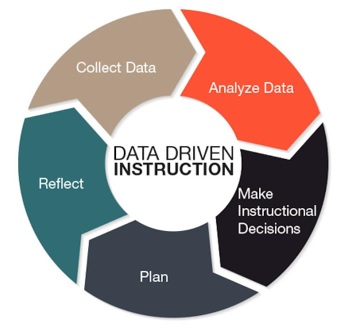Being true to real student learning is a teacher's priority. Unfortunately, the results of a single exam, administered on a single day, close to the conclusion of the school year, are the focus of our profession. Yes, the data from standardized tests may be helpful, but as educators, we spend the whole year gathering vital and immediate information about our students, which informs and impacts our teaching methods, as well as where and what we review, modify, and reteach. Here are some of the ways we use the student data that instructors gather.
3 Ways To Collect Student Data For Informative Teaching

Source: theautismhelper.com
Examine three ways that student data may help you make educated decisions and provide individualized training:
1. From The Classroom
The most significant and practical student data are low-stakes tests. Formative assessments are one of the best methods for learning where kids are and where we need to go next are exit slips, quick quizzes, and thumbs up/down. Summative tests, like final scientific exams or essays analyzing literature, let us gauge how well students are learning both individually and in groups. If many kids perform poorly on a high-stakes test, we must evaluate our instruction and make the required changes moving forward.
With your guide on the side, the children feel at ease with you strolling around and sitting with them in their groups. Stated differently, they remain active even when you move away from the podium or your usual location near the whiteboard. With this flexibility, you may observe and collect information on specific pupils.
2. From Cumulative Files
Finding the time to read students' files might be challenging, but if you haven't done it already, I promise it's worth it. There is a lot of information in these files. You will find important information by walking to the counseling office after school. There are instances when a child's cumulative files show a significant grade change at a particular stage in their academic career.
The youngster may have been an A student until eighth grade but then began receiving Ds and Fs. You can share the data with them and voice your concerns. After that, you have the chance to show empathy, recognize their struggles, and work with them to establish some goals that will help them succeed academically. You can also utilize this information to push for further help for students or to send them to extra counseling services.
3. From Standardized Test Scores
There are several advantages to looking at your present kids' prior standardized test results. A student's test result does not define who they are or are not, just as a grade does.
When making judgments about instruction, consider the outcomes of standardized tests as well as additional information (such as observations and tasks completed in class). Communicate test results to students one-on-one. Then, before the next exam, give each of them some achievable, realistic goals to strive for.
What Can You Do After Gathering The Data
Here are a few things you can do once you have collected student data:
- Decide Differentiation And Student Grouping
Your kids' performance on standardized tests might be classified as advanced, competent, basic, or below basic. This might assist guide your seating chart creation, student group selection, and individual differentiation.
The reason why period three is going over the material more swiftly and thoroughly may become clear if you have a lot of students who scored advanced in your third-period class and a lot of students who scored basic in period two. You can modify the instructions and assistance as necessary.
- Generate Curiosity And Take Action
They might only require a fast review of test anxiety reduction techniques or a brief pep talk before an exam.
Additionally, speaking one-on-one with kids who experience similar discrepancies between their performance and grades in the classroom and their scores on standardized tests can yield a wealth of information.
Bottom Line
It's critical to keep in mind that student data is only one component. Creating a supportive and encouraging learning environment for our kids requires us to establish good relationships with them. With courses in educational management, you may better understand each student's requirements and adjust your teaching strategies by utilizing student data and spending time getting to know them personally.
We believe education should be accessible for everyone. That’s why we don’t charge for our blogs. Find the right course that will help you in your career with us, contact us at - 1800–212–6400. You can mail us at act@asiancollegeofteachers.com.
Written By : Sanjana
